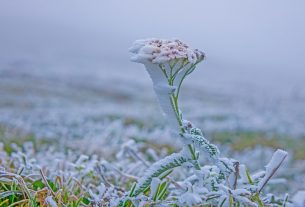Snowdrifts causes traffic disruption in six Hungarian counties, namely in Győr-Moson-Sopronban, Vasban, Zalában, Veszprémben, Somogyban and Baranya.
10 tips for winter driving:
- Know your route and keep abreast of weather conditions.
- Drink plenty of water. When the weather is chilly, dehydration might seem unlikely, but according to a study by the Mayo Clinic, as little as a 1-2 percent loss of body weight can lead to fatigue and reduced alertness — both of which can be deadly when you are driving in icy conditions.
- Eat enough food. Your body needs more nourishment in cold weather than it does on a balmy summer day. Avoid candy bars and other quick-sugar-release snacks. Sandwiches, fruit or a thermos of hearty stew are much better choices.
- Pack a winter travel safety kit. Include a cell phone, an ice scraper and brush, a tow rope, cat litter (for use as a traction aid), blankets, a good flashlight, a candle, matches, a good book, a portable weather radio and a can of lock de-icer. (Never use hot water on glass or locks — it will refreeze and create a bigger problem.)
- Slow down. A good rule of thumb is to reduce speed by 50 percent in snowy conditions. Equally important: Don’t go too slow. Your car needs momentum to keep moving through snow on grades.
- Keep a light touch on the controls. Smooth operation is the key to keeping control in slippery situations. Nervousness can lead to a hard clench of the steering wheel, which can result in loss of control. Consciously loosen your grasp or stretch out your fingers from time to time to help prevent that white-knuckled grip.
- Know how to recover from skids. When braking on a slippery road, it’s all too easy to “lock up” your wheels by stepping on the brakes a little too hard. If you start to skid, steer the vehicle gently in the direction you want the front of your vehicle to go and don’t touch your brakes. This used to be called “turning into the skid,” but tests have shown that drivers often misinterpret these words in real-life situations.
- Keep your tires in good condition and properly inflated. Cold weather reduces tire pressure, so check and adjust frequently.
- Make frequent rest stops. Winter travel is much more fatiguing than summer cruising, so stop every hour or so.
- If you get stuck, stay in your vehicle. Stay warm and wait for assistance. Make sure that your exhaust pipe is clear of any obstructions, including snow and ice; if you don’t, carbon monoxide gas can build up inside the vehicle.
Source: debreceninap.hu
Photos: György Varga/MTI




